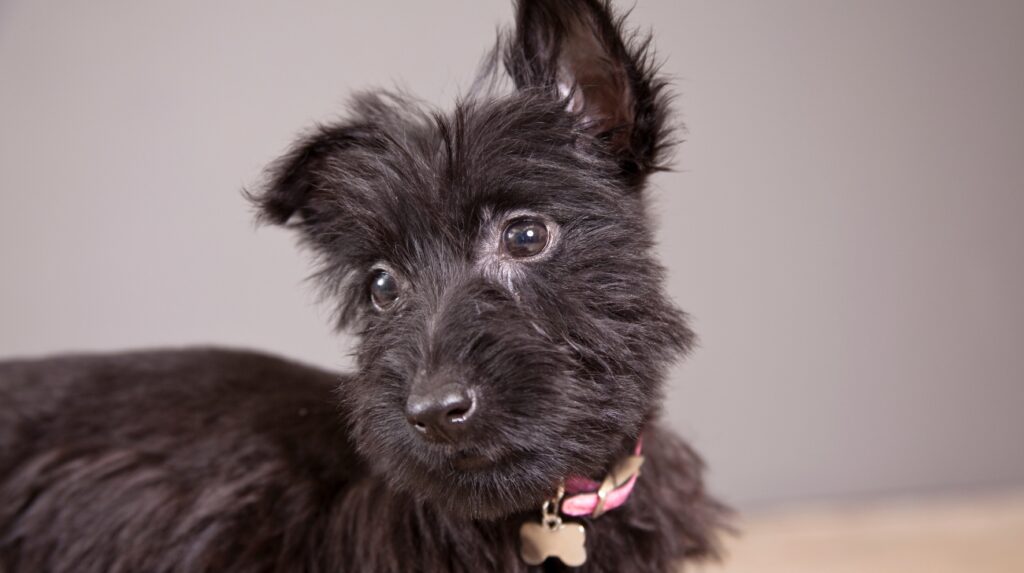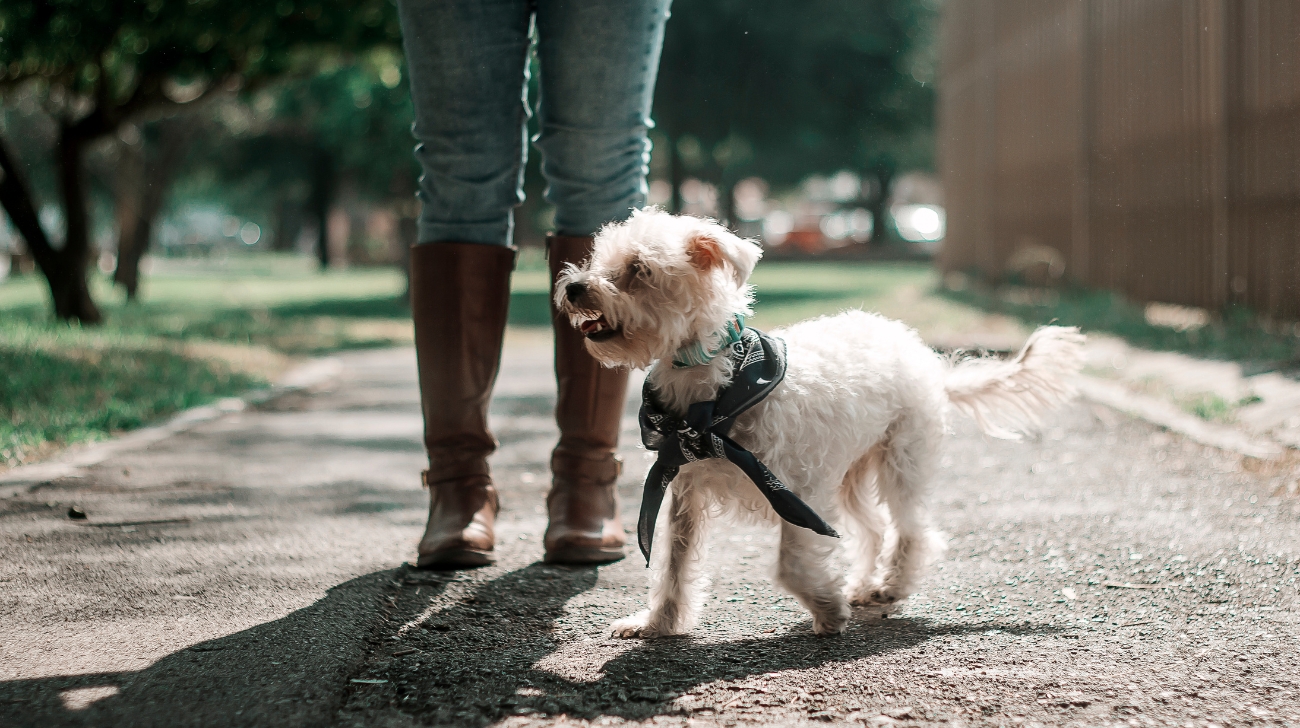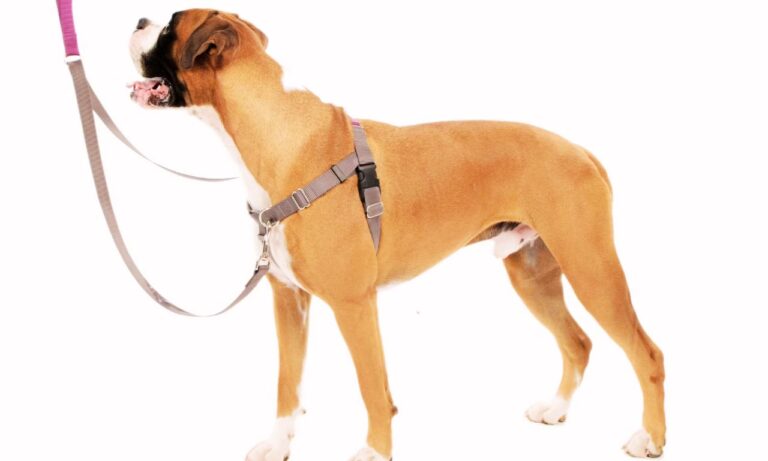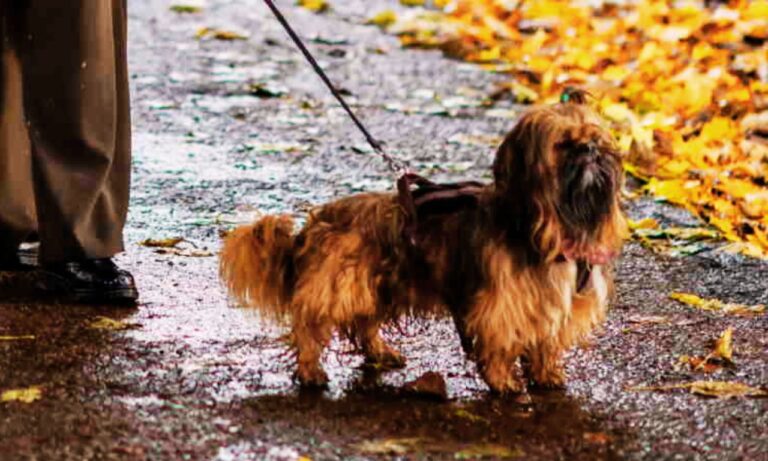When considering a collar for your puppy, safety is a primary concern. The right type of collar, used properly, can provide a secure and comfortable way to control your pet, display identification, and facilitate training. However, not all collars are suitable for every puppy, and misuse can lead to safety risks. Here’s an in-depth look at the safety considerations of using collars for puppies, the types of collars available, and best practices to ensure your puppy’s well-being. So, Are Dog Collars Safe for Puppies? Do shock collars work for bad behavior in dogs? Discover whether shock collars are an effective solution for managing unwanted dog behavior.
Blog Highlights
Toggle1. Understanding the Risks of Dog Collars
So, Are Dog Collars Safe for Puppies? Dog collars can present certain risks if they are not chosen or used correctly. For instance, any collar left on an unattended dog has the potential to catch on objects, leading to choking or injury. Puppies, in particular, are more prone to accidents due to their playful and curious nature.

It is also common for puppies to engage in mouthy play, which can result in their jaws getting caught in each other’s collars, leading to potential injury or even strangulation. For this reason, it is recommended to use a breakaway collar that releases under pressure, especially during playtime with other dogs.
Flat collars are the most common type and are generally safe for most puppies when appropriately fitted. However, they should not be too tight, and owners must ensure that two fingers can fit comfortably between the collar and the dog’s neck. Does a shock collar work on a German Shepherd? Evaluate the effectiveness of using shock collars specifically for training German Shepherds.
Improperly fitted collars can cause discomfort, skin irritation, and even more severe injuries, such as neck strain or trachea damage if the dog pulls on the leash excessively. Additionally, tags attached to collars can pose a risk by catching on objects or creating noise that could startle a puppy.
2. Types of Collars and Their Safety for Puppies

- Flat Collars: These are the standard collars most dog owners use. They come in various materials like nylon, leather, and fabric. Flat collars are generally safe for puppies, provided they are not left on during unsupervised play. They should fit snugly but not too tightly. Reflective flat collars can be beneficial for visibility during low-light walks.
- Martingale Collars: These collars are designed to prevent dogs from slipping out by tightening when pulled but not enough to choke. Martingale collars are suitable for puppies with heads smaller than their necks, such as sighthounds. They are recommended for training purposes and should be used under supervision to ensure they do not cause discomfort or injury.
- Breakaway Collars: These collars are specifically designed to release under pressure if they get caught on something, which can prevent choking accidents. Breakaway collars are ideal for puppies who play a lot with other dogs or roam in areas with obstacles. However, they might not be suitable for walks, as they can detach if the dog pulls too hard.
- Harnesses vs. Collars: Harnesses are an alternative to collars that distribute pressure more evenly across a dog’s body, reducing the risk of neck injury. Harnesses are particularly suitable for puppies that pull on their leash, as they can provide more control without causing throat damage. However, they might not be ideal for identification purposes as they are less likely to carry tags.
- Aversive Collars (Choke, Prong, and Shock Collars): Aversive collars, such as choke chains, prong collars, and shock collars, are not recommended for puppies. These collars work by inflicting pain or discomfort to deter unwanted behavior, which can lead to physical injuries and emotional trauma, causing anxiety and fear. Most experts agree that positive reinforcement is a more effective and humane method for training puppies.
3. Best Practices for Using Collars on Puppies
To ensure the safety and comfort of your puppy, follow these best practices when using collars:

- Regularly Check Fit: Puppies grow quickly, so it is essential to regularly check that their collar fits correctly. A good rule of thumb is to ensure you can fit two fingers between the collar and your puppy’s neck. Adjust the collar as needed to accommodate your puppy’s growth.
- Use Collars for Identification and Training: Collars with identification tags are crucial in case your puppy gets lost. However, during training or exercise, consider using a martingale collar or harness to prevent slipping and provide better control. Always supervise your puppy while they are wearing a collar to prevent accidents.
- Choose the Right Material: Select collars made from materials that are gentle on your puppy’s skin. Soft nylon, leather, or padded collars are less likely to cause irritation or discomfort. Avoid collars with sharp edges or rough materials that could rub against your puppy’s neck.
- Avoid Unsupervised Play with Collars: Never leave a collar on a puppy during unsupervised play, especially when playing with other dogs. Breakaway collars can provide an added layer of safety, but the safest option is to remove collars altogether during play.
- Gradually Introduce the Collar: Start by letting your puppy wear the collar for short periods while offering treats and positive reinforcement. This helps the puppy associate wearing a collar with a positive experience. Gradually increase the duration as the puppy becomes accustomed to it. Best dog shock collar for German Shepherd – Review the top-rated shock collars designed for German Shepherds to enhance training results.
4. Alternatives to Traditional Collars
For puppies that are prone to pulling or have medical conditions that make collars unsuitable, harnesses can be an excellent alternative. Harnesses distribute pressure evenly across the body, minimizing the risk of neck injuries. They also provide better control during walks and are especially helpful for training purposes. Additionally, head collars can offer gentle guidance without causing discomfort, although they require proper fitting and gradual introduction.

5. When to Avoid Collars
While collars are suitable for most puppies, there are situations where they should be avoided. Puppies with neck injuries, respiratory problems, or those prone to pulling excessively should not wear collars. In such cases, a harness can provide a safer alternative. Similarly, puppies with very sensitive skin or who are prone to allergies may benefit from a collar made of hypoallergenic materials or a breakaway design that reduces friction. How to use a remote dog training collar – Find out the proper techniques for using a remote training collar on your dog.
6. Signs of an Unsafe Collar and What to Watch For
Even if you’ve selected a collar that seems appropriate for your puppy, it is important to monitor its condition and your puppy’s behavior to ensure it remains a safe choice. There are several signs to watch for that may indicate a problem with the collar:

- Visible Discomfort or Skin Irritation: If your puppy frequently scratches at their collar or shows signs of irritation such as redness, chafing, or hair loss around the neck, it could be a sign that the collar is too tight, the material is irritating, or the collar needs to be adjusted. Inspect the collar regularly for rough edges or stitching that could rub against your puppy’s skin.
- Difficulty Breathing or Coughing: If your puppy exhibits signs of labored breathing, coughing, or gagging, especially when pulling on the leash, it may indicate that the collar is too tight or restrictive. In such cases, switch to a harness that relieves pressure on the neck and consult a veterinarian to ensure there are no underlying health issues.
- Changes in Behavior: Puppies that become anxious, fearful, or aggressive when the collar is put on may associate the collar with a negative experience. This could be due to pain, discomfort, or trauma related to improper use of the collar. Use positive reinforcement to make wearing the collar a more positive experience and ensure it fits correctly.
- Signs of Wear and Tear: Regularly check the collar for signs of wear and tear, such as frayed edges, broken buckles, or loose stitching. A damaged collar can break unexpectedly, posing a risk to your puppy. Replace any worn collars immediately to maintain safety.
- Puppy’s Growth: Puppies grow rapidly, and collars that fit perfectly one week may be too tight the next. Check the fit of your puppy’s collar at least once a week, and adjust or replace it as needed to ensure it remains comfortable and safe.
By staying vigilant for these signs, you can quickly address any issues with your puppy’s collar, preventing accidents and ensuring that your puppy remains safe and comfortable at all times. What is the difference between an E-collar and a shock collar? Learn about the distinctions between E-collars and shock collars in dog training.
Final Words
Dog collars can be safe for puppies when chosen and used correctly. The right type of collar should fit well, be comfortable, and match the specific needs of your puppy. While flat collars are generally safe for everyday use, martingale collars offer more security for training, and breakaway collars provide safety during play. Avoid aversive collars like choke, prong, or shock collars, which can cause physical and emotional harm.
Regularly checking the collar’s fit, supervising your puppy, and using positive reinforcement during training will help ensure your puppy stays safe and comfortable. Always consider your puppy’s unique needs, and consult with your veterinarian or a professional dog trainer for personalized advice. Hope so, now you know Are Dog Collars Safe for Puppies. Best remote control dog training collar – Explore the most effective remote control collars for training your dog.





